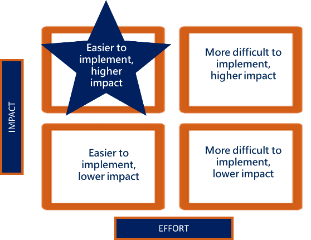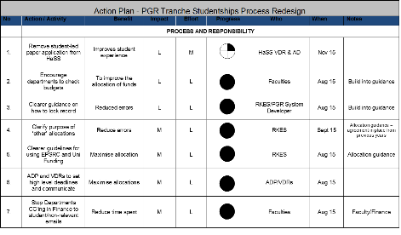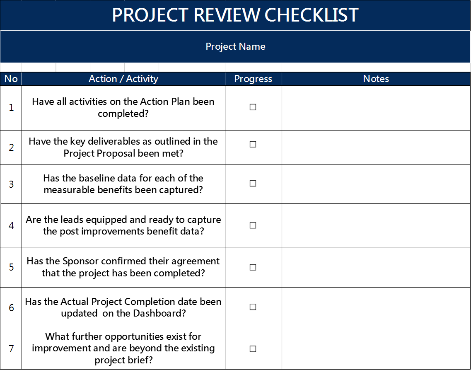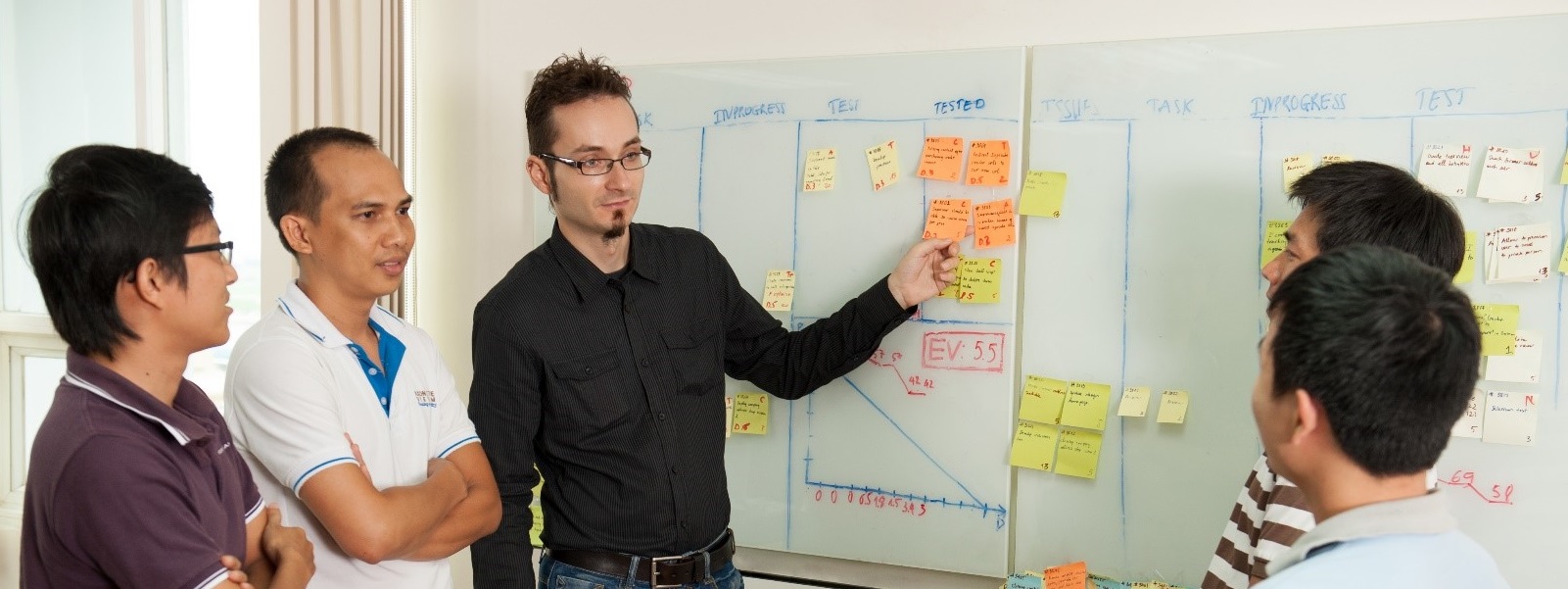In my last blog post in the series, we covered the first five stages of running a Lean project. In this post, I want to cover the last four project stages.
Stage Five – The Impact / Effort Chart
 The impact/effort chart is an effective tool you can use to prioritise your improvement ideas. It helps you to decide which improvement ideas will have the biggest positive impact on your project and are the easiest to implement.
The impact/effort chart is an effective tool you can use to prioritise your improvement ideas. It helps you to decide which improvement ideas will have the biggest positive impact on your project and are the easiest to implement.
You need to identify all of the potential improvements and then capture them on green sticky notes, with only one idea per note. For each idea, you need to answer two questions:
- What positive impact will the change have on the project benefits?
(High impact or low impact) - How difficult will it be to implement the change?
(Easy or difficult)
The top left-hand quadrant of the chart contains the ideas that will have high impact and require the least effort. These can provide you with some quick wins.
Having prioritised all of the improvements that you intend to make you are now in a position to create a future state process map, which is the next stage.
Stage Six – The Future State Process Map
The Future State Process Map is a visual representation of the new process once you have put all of the improvements in place. It helps people understand what the new process will look like.

Create a future state process map by doing the following:
- Use a roll of brown paper
- Use yellow sticky notes for the process steps
- Number the process steps once you are happy with them
You are now in a position to move onto stage seven and create an action plan to deliver the future state map in reality with the associated evidenced benefits.
Stage Seven - The Action Plan
 The Action Plan is a tool for both managing the actions arising from your project activity as well as assigning responsibility to individuals to ensure that actions are completed.
The Action Plan is a tool for both managing the actions arising from your project activity as well as assigning responsibility to individuals to ensure that actions are completed.
The basis for your action plan is the agreed prioritised improvements from your impact/effort chart (stage 5) and anything else that might have been identified as a result of the creation of your future state map (stage 6).
It is a good idea to set up a time to review the actions with the team regularly. This is when you update the progress of the action/activity.
You are just about there. There are only a couple of more stages that you need to make sure happen. The first of these is the project review, stage eight.
Stage Eight - The Project Review
 The project lead should undertake a project review towards the end of a project. It is a way to ensure delivering the project scope and objectives and that we are in a good position to evidence the benefits. Confirm key activity completion using a checklist.
The project lead should undertake a project review towards the end of a project. It is a way to ensure delivering the project scope and objectives and that we are in a good position to evidence the benefits. Confirm key activity completion using a checklist.
The good news is that if you have completed stage eight then it should be just a case of waiting for the benefits to arrive as per the benefits data plan (stage three). Oh, that life was that simple.
Stage Nine - Benefit Realisation and Sustainment
The final stage of your project is the benefits realisation. You should report the benefits of the project to the sponsor and relevant stakeholders. This can often be in the form of a case study. This is the time to celebrate the successes of the change.
In conclusion, applying these nine project stages will give you a sound structure and approach to deliver your continuous improvement projects. It will also allow you to evidence the benefits of your project to key stakeholders. If you would like to find out more about our “Lean for Leaders” approach, please get in touch.


